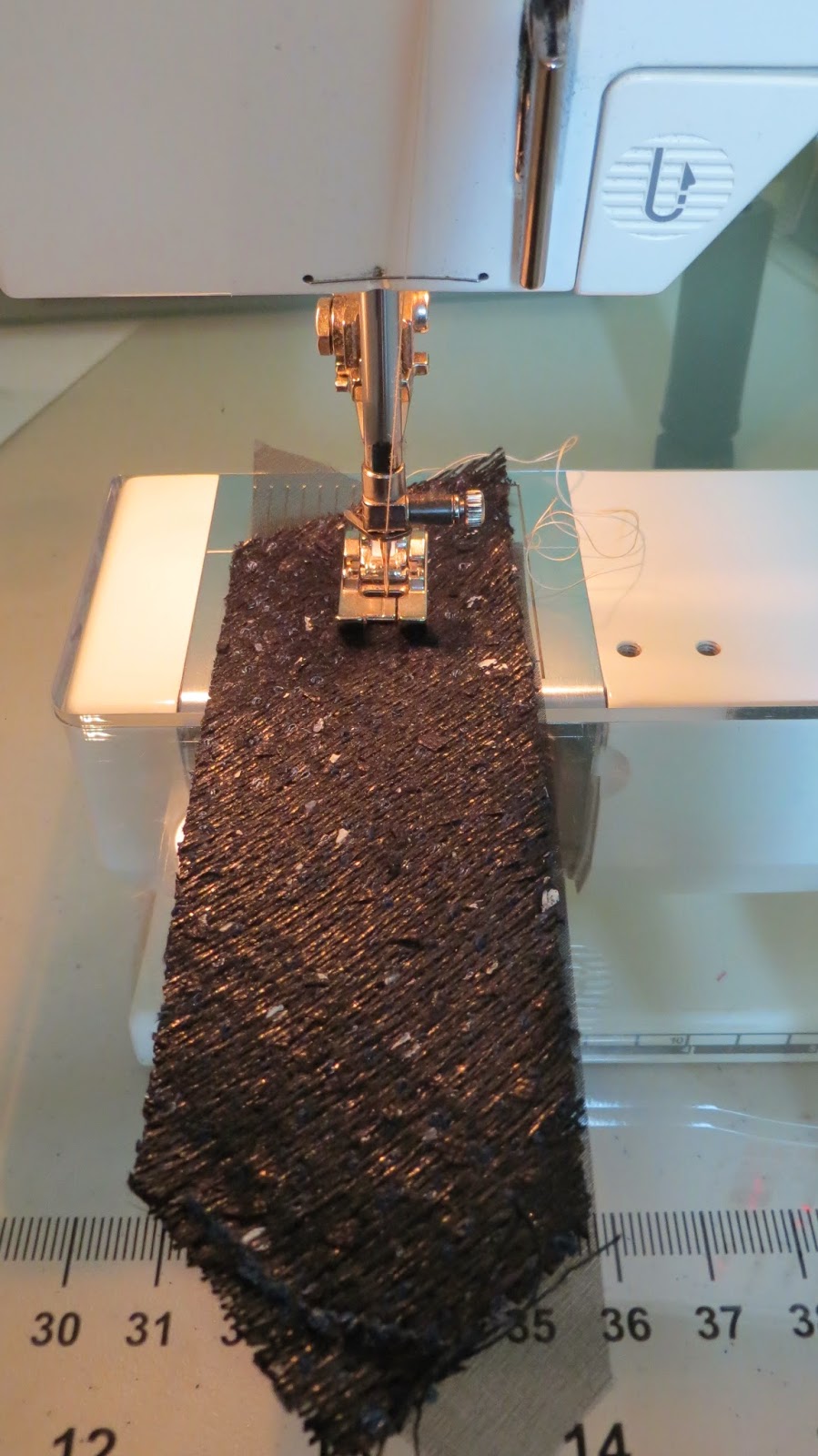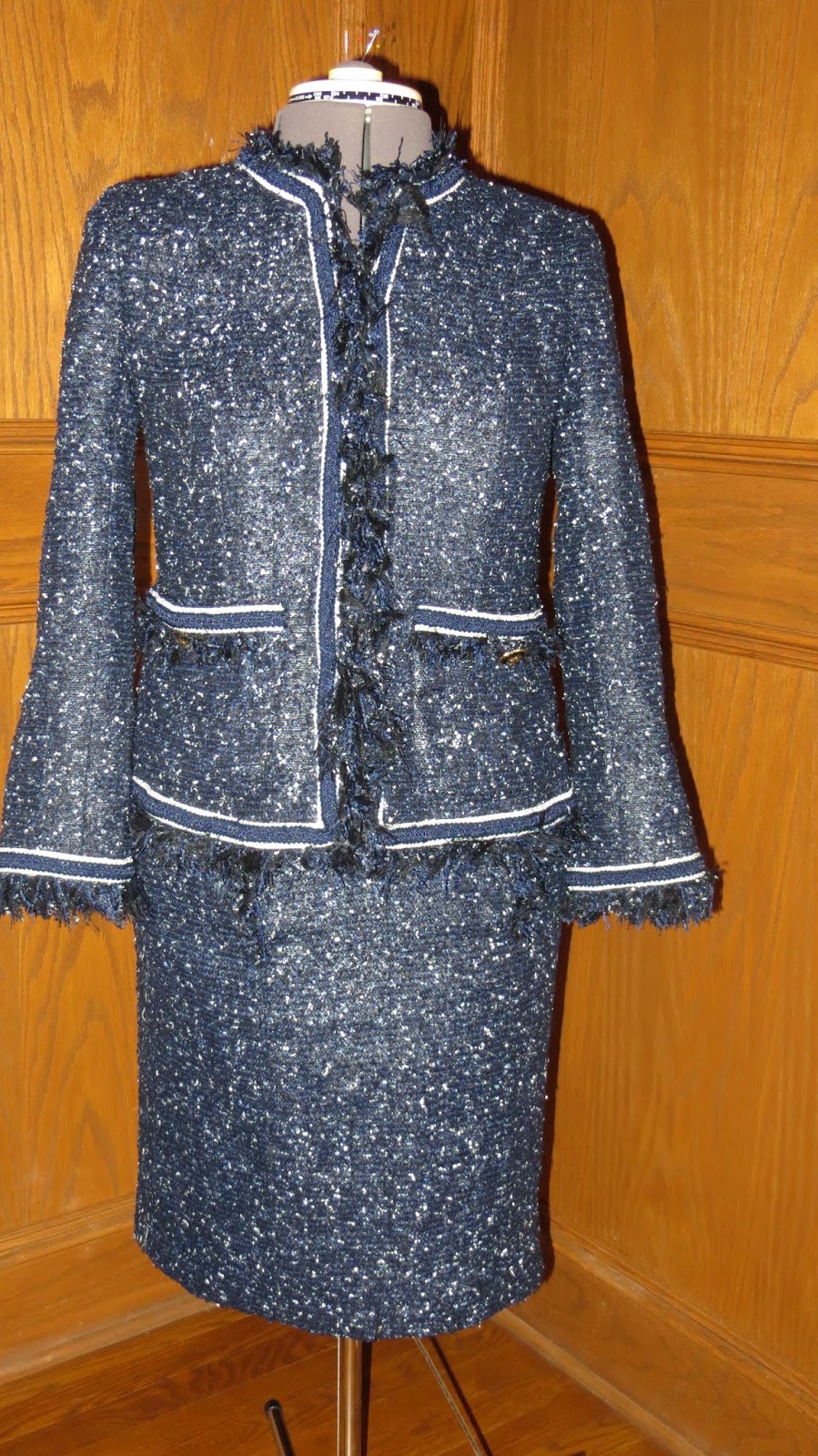I cut strips on silk organza on the true bias, which is at a 45 degree angle. I used the two inch width of my ruler. You may wonder why I did not cut the organza on the straight of grain, tried that and found it difficult to work with. The bias allows you to place the fringe more accurately and to negotiate corners. Trust me, it makes a big difference.

I then cut bias strips of my fashion fabric on the true 45 degree bias. My strips were longer then the above example, but some were relatively short depending on how much fabric I had to work with.
Case in point. This is the fabric I ended up with at the end of my jacket and skirt.
Here are the two pieces you should have at this point.
This is a very important step. You need to flip your fashion fabric so the wrong side is facing up. With the organza it doesn't matter which side is up as both are pretty much the same, at least on mine.
Stack the fashion fabric on top of the organza creating a sandwich effect.
Next, machine stitch down the center of your sandwich, organza on the bottom fashion fabric on top. I used a standard stitch length of 2.5.
Here is your sandwich with the organza side facing you. I used light thread in my example but you would use matching thread at home.
I ironed my organza to one side, and my fashion fabric to the other side. Do you see now why you had to put the fashion fabric face down. If not it would not have looked right, trust me. I do not show it but I used a piece of organza to press my fashion fabric as I think there is lurex in this fabric. You have at this stage two layers of the fashion fabric and two layers of the silk organza.
I then stitched a zig zag stitch catching the organza-zig then the fashion fabric-zag. This helps keep the fringe stable. Again, I used matching thread on my garment. The white above is just for demonstration purposes.
To actually fringe I used scissors that had a dull point.
I basically separated the fibers and combed them downward.
You have to angle the blade downward to get a good fringe.
I turned my fringe sandwich to the non fringed side and separated the fibers as on the orginal side wallha! A healthy fringe. I hope this demystifies making fringe. I sometimes give it a comb through before I wear the suit, happy with the result though.


































